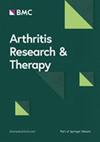1999-2018年美国青少年中按种族和民族分列的高尿酸血症患病率及其变化趋势
IF 4.9
2区 医学
Q1 Medicine
引用次数: 0
摘要
我们的目的是确定按性别和种族/民族分组划分的青少年高尿酸血症的最新发病率和趋势,并调查与美国青少年高尿酸血症相关的潜在风险因素。数据来自 1999-2018 年 NHANES 周期中的 12-17 岁青少年。青少年的高尿酸血症定义为≥ 5.5 mg/dL。根据性别、种族/人种、体重指数(BMI)、贫困收入比(PIR)和父母教育水平,计算了每个四年调查周期的高尿酸血症患病率及 95% 置信区间(CIs)。分别进行线性回归和逻辑回归分析,以评估平均血清尿酸水平和高尿酸血症患病率在四年周期内的线性变化趋势。利用 2011 年至 2018 年的 NHANES 数据,我们通过线性回归和泊松回归分析确定了与平均血清尿酸水平和高尿酸血症相关的因素。共有 11 264 名参与者被纳入分析。2015-2018 年,高尿酸血症的总体患病率为 32.78%,男性为 50.7%,女性为 13.51%。从1999年至2002年到2015年至2018年,高尿酸血症患病率未发现明显趋势。2011 年至 2018 年期间,男性高尿酸血症的患病率明显高于女性(患病率比 [PR],3.50 [95% CI,2.83-4.33]),非西班牙裔亚裔的患病率明显高于非西班牙裔白人(患病率比 [PR],1.26 [95% CI, 1.04-1.53]),以及超重(PR, 1.63 [95% CI, 1.32-2.01])或肥胖(PR, 2.45 [95% CI, 2.08-2.88])者与体重正常者相比。女性肥胖与高尿酸血症之间的相关性(PR,4.77 [95% CI,3.08-7.39])强于男性(PR,2.06 [95% CI,1.82-2.34])。此外,与其他种族群体相比,非西班牙裔黑人肥胖青少年的高尿酸血症 PR 更高(PR,3.40 [95% CI,2.54-4.55])。这项研究更新了美国青少年中按性别和种族/族裔分列的高尿酸血症的最新趋势。我们的研究结果表明,在美国青少年中,高尿酸血症与肥胖有明显的关联,其关联程度因性别和种族/族裔而异。本文章由计算机程序翻译,如有差异,请以英文原文为准。
Prevalence of and trends in hyperuricemia by race and ethnicity among US adolescents, 1999–2018
Our objective was to ascertain the most recent prevalence and trends of hyperuricemia among adolescents, stratified by sex and race/ethnicity subgroups, as well as to investigate potential risk factors associated with hyperuricemia in US adolescents. Data were obtained from adolescents aged 12–17 years in the 1999–2018 NHANES cycles. Hyperuricemia for adolescents was defined as ≥ 5.5 mg/dL. The prevalence of hyperuricemia, along with 95% confidence intervals (CIs), was calculated for each four-year survey cycle, stratified by sex, race/ethnicity, body mass index (BMI), poverty income ratio (PIR), and parental education levels. Linear regression and logistic regression analyses were conducted independently to evaluate the linear trends in mean serum urate levels and the prevalence of hyperuricemia across the four-year cycles. Utilizing NHANES data from 2011 to 2018, we identified factors associated with mean serum urate levels and hyperuricemia through the application of linear regression and Poisson regression analyses. A total of 11 264 participants were included in the analysis. In 2015–2018, the overall hyperuricemia prevalence was 32.78%, 50.7% in males, and 13.51% in females. No significant trends were identified in the prevalence of hyperuricemia from 1999 to 2002 to 2015–2018. Between 2011 and 2018, hyperuricemia was significantly more prevalent among males compared to females (prevalence ratio [PR], 3.50 [95% CI, 2.83–4.33]), non-Hispanic Asians compared to non-Hispanic Whites (PR, 1.26 [95% CI, 1.04–1.53]), and individuals with overweight (PR, 1.63 [95% CI, 1.32–2.01]) or obesity (PR, 2.45 [95% CI, 2.08–2.88]) compared to those of normal weight. There was a stronger correlation between obesity and hyperuricemia among females (PR, 4.77 [95% CI, 3.08–7.39]) than in males (PR, 2.06 [95% CI, 1.82–2.34]). Furthermore, non-Hispanic Black adolescents with obesity exhibited higher PRs (PR, 3.40 [95% CI, 2.54–4.55]) for hyperuricemia in comparison to other ethnic groups. This study has updated recent trends in hyperuricemia by sex and race/ethnicity among US adolescents. Our results suggest that hyperuricemia has a significant association with greater obesity in US adolescents, and the degree of correlation varies by sex and race/ethnicity.
求助全文
通过发布文献求助,成功后即可免费获取论文全文。
去求助
来源期刊

Arthritis Research & Therapy
RHEUMATOLOGY-
CiteScore
8.60
自引率
2.00%
发文量
261
审稿时长
14 weeks
期刊介绍:
Established in 1999, Arthritis Research and Therapy is an international, open access, peer-reviewed journal, publishing original articles in the area of musculoskeletal research and therapy as well as, reviews, commentaries and reports. A major focus of the journal is on the immunologic processes leading to inflammation, damage and repair as they relate to autoimmune rheumatic and musculoskeletal conditions, and which inform the translation of this knowledge into advances in clinical care. Original basic, translational and clinical research is considered for publication along with results of early and late phase therapeutic trials, especially as they pertain to the underpinning science that informs clinical observations in interventional studies.
 求助内容:
求助内容: 应助结果提醒方式:
应助结果提醒方式:


